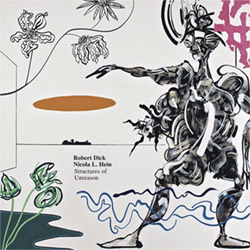
Taking guitar and flute into very strange territory informed by vast experience and technical skill, NY flutist Robert Dick and electric guitarist Nicola L. Hein create truly unique and dramatic sound worlds, sometimes tense, sometimes beautiful, but always fascinating in momentum and expression; unique musical structures that refuse to be easily categorized: extraordinary!
Out of Stock
Quantity in Basket: None
Log In to use our Wish List
Shipping Weight: 3.00 units
Sample The Album:
Robert Dick-Glissando Flute, bass flute, piccolo
Nicola L. Hein-electric guitar, electronics
Click an artist name above to see in-stock items for that artist.
UPC: 5609063800654
Label: Shhpuma
Catalog ID: SHH065
Squidco Product Code: 30565
Format: CD
Condition: New
Released: 2021
Country: Portugal
Packaging: Cardboard Gatefold
Recorded at Peter Karl Studios, in Brooklyn, New York, on February 20th, 2020, by Peter Karl.
"The first thing that strikes anyone listening to Robert Dick or Nicola L. Hein, preferably together, is -- in a world of creative musicians with personal approaches to sound, this stuff is really different. Both Dick and Hein approach their instruments from unique and fully developed musical perspectives. Their sound world and dramatic trajectory rest on the dialectic tension of wind and string, noise and rhythmic pulsation, acoustic and electronic sound. The duo has been performing on many occasions, in Europe and the US., developing their sonic language that communicates in concert venues and unusual gathering spaces alike.
Italian philosopher Alessandro Bertinetto writes about Structures of Unreason: "The sounds we hear do not rely on a predetermined functional logic; rather the musical event - shaped by the individual episode or emerging out of the encounter/clash between two vectors of forces - follows the directions that it itself produces. The music focuses on the materiality of the timbre, the evolution of formal micro-episodes, and repetitive yet flowing rhythmic architectures that are often broken and fragmentary, like the fragile structures we impose on ourselves through the everyday."-Shhpuma
"Aspects and gestures of a percussive, tactile musicality and an atmospheric energy, incisive and pungent at times, at others more soft and airy, but always diffused and pervasive, are the aesthetic signature of the artistic meeting and the mutual sonic intermingling of two extraordinary improvisers. Robert Dick's and Nicola Hein's interactional interplay explores what happens in the contingency of sound. The music focuses on the materiality of the timbre, the evolution of formal micro-episodes, and repetitive yet flowing rhythmic architectures that are often broken and fragmentary, like the fragile structures we impose on ourselves through the everyday. Staying and floating in the moment; feeling, absorbing and sonically rendering the lived material temporality of the body: this is the way in which structures of the unreason become music. The sounds we hear do not rely on a predetermined functional logic; rather the musical event - shaped by the individual episode, or emerging out of the encounter/clash between two vectors of forces - follows the directions that it itself produces.
Wonderful are the moments when silence flickers unexpectedly and sound makes its way again rising from empty space. Natural, expressive force: cosmic, yet entirely earthly sound. Indeed, a benthic, deep, submarine voice attached to the bottom: the unison that, growing to a spasm (not realized, only announced), tears the environment and then disintegrates in a swarm of acoustic microorganisms. Something is felt, something announces itself symptomatically; but it doesn't unfold in an accomplished sense. It remains and manifests itself in the way of its making, which is also an undoing, a fading away. Like a breath, low to the ground.
Sub-merged life. But life, after all."-from the liner notes

The Squid's Ear!
Artist Biographies
• Show Bio for Robert Dick "Robert Dick (born January 4, 1950) is a flutist, composer, teacher and author. His musical style is a mix of classical, world music, electronic and jazz, and he is the inventor of the "glissando headjoint" a custom flute head joint that allows the player to achieve electric guitar-like whammy bar effects with their instrument. In 2014, the National Flute Association awarded Dick its Lifetime Achievement Award. The New York Times said his “technical resources and imagination seem limitless" while JazzTimes called him “revolutionary.” Robert Dick was born and raised in New York City. He began playing the flute in the fourth grade, after hearing the piccolo on the radio in the Top 40 hit “Rockin’ Robin. His primary teachers were Henry Zlotnik, James Pappoutsakis, Julius Baker and Thomas Nyfenger. As a teenager, Dick wanted to become an orchestral flutist, and played first flute in the Senior Orchestra at the High School of Music and Art and also the New York All-City High School Orchestra. “Studies with him (Julius Baker) were geared toward becoming an orchestral player, and that was my dream at the time. But as I grew out of that dream, I realized that my training really hadn’t provided a look at music from the inside, which is what I needed—particularly the idea that music is generated from hearing within and recognizing what you are hearing.” He became a soloist and composer. At Yale College, Dick earned a BA degree, and met Robert Morris, a composer and theorist, who mentored him as he wrote his first compositions. While at Yale, Dick wrote his first book: THE OTHER FLUTE: A Performance Manual of Contemporary Techniques, and then earned his master's degree in composition, studying with Morris as well as electronic music with Bulant Arel and Jacob Druckman. While attending Yale’s graduate school, Dick composed “Afterlight,” a flute piece that used multiphonics as its basis. “Afterlight” received a BMI Oliver Daniel Prize. After leaving school in Spring 1973, Dick lived in New Haven, Connecticut until September 1977, when he moved to Buffalo, New York to join the contemporary music group, the Creative Associates. Dick was a member of the group until June 1980. While in New Haven, he wrote his second book Tone Development through Extended Technique and began to develop himself as an improviser and composer. Dick spent six months in Paris from July - December 1978 working at I.R.C.A.M. (Institute of Research and Coordination, Acoustics and Music) developing his idea for a new flute mechanism. The first prototype was made by Albert Cooper in London in 1984. This design remains unfinished. From Fall 1980 until Spring 1992, Dick lived in New York City, developing his compositions, improvisations and wrote Circular Breathing for the Flutist. In this period, he self-published The Revised Edition of THE OTHER FLUTE: A Performance Manual of Contemporary Technique and his later books, compositions and instructional recordings through his Multiple Breath Music Company. In 1986, he left the role of concert soloist in contemporary music to perform his own music and the music of composer-performer collaborators exclusively. Dick performed a recital of his own works as part of the New York Philharmonic’s Horizons 84 Festival at Avery Fisher Hall in 1984. In May 1992, he moved to Switzerland for ten years, continuing his career as a composer-performer. He returned to the US in 2002, as Visiting Assistant Professor of Flute at the University of Iowa. In July 2003, he returned to New York City. Since July 2013, Dick has been dividing his time between New York City and Kassel, Germany, where his children Sebastian (born 2006) and Leonie (born 2008) live with their mother, composer-pianist Ursel Schlicht.[citation needed] Dick's recitals today primarily consist of his compositions and improvisations, occasionally incorporating the influences of Paul Hindemith, Georg Philipp Telemann and Jimi Hendrix into his repertoire. As an instructor, Dick created a method and practice of teaching for flutists that he documented in his books: Tone Development through Extended Techniques, and Circular Breathing for the Flutist and the two volumes of FLYING LESSONS: Six Contemporary Concert Etudes. He teaches masters classes at hundreds of international universities. Dick is the inventor of the Glissando Headjoint®, a telescoping flute mouthpiece which allows the flutist to slide and extend notes. As a composer, Dick's work has been recognized by a Koussevitzky Foundation Commission, a Guggenheim Fellowship and two NEA Composers Fellowships, among many grants and commissions. Dick has composed a new work for the National Flute Association Young Artist Competition. He has recorded over 20 albums and appeared as a guest on many other recordings." ^ Hide Bio for Robert Dick • Show Bio for Nicola L. Hein "Nicola L. Hein (Born 1988 in Düsseldorf) is a guitarist, composer and soundartist. As a guitarist he is mainly concerned about the search for new sounds on his instrument. He plays electric and acoustic guitar with or without preperations and tries to find new ways of playing the guitar within the context of Free Improvised Music and Jazz. He plays the guitar with his hands and plectrum but also with a lot of different objects: screws, rulers, iron wool, violin bow, abrasive paper, magnets and many other objects which are part of his musical vocabulary. The result is his very own world of sounds, which is using the rich potential of the guitar as a creator of sounds. The manual creation is a very important character of this sound world, which never gets distorted by the use of electronic effects. As a composer he finds different ways of integrating philosophical ideas into music and to play music as a form of philosophy. In order to actualize itself the compositional work is always aimed at the improvising musician as a dialectic partner of the composition. From the interplay of these partners an ästhetic emerges that is based on the spontanity of the performance and the setting of aesthetic action spaces alike. As a soundartist he is developing different ways to project the musical ontology of Improvised Music onto different aesthetic rooms. This is done by creating instruments, installations and other ways of using the guitar, which use the musical ontology of Improvised Music as the center of the sonic practise but generate a lot of different sense structures that differ from the usual practise of Improvised Music (for example by creating a scenic sense layer etc.). He also creates sound installations which involve the recipient as a part of the work. The works encourage the recipient to make a special aesthetic experience with different sounds. The aesthetic of these sounds is inspired by the aesthetics of Free Improvised Music. He studied Jazzguitar, Soundart/Composition, Philosophy and German philology at the Friedrich-Wilhelms Universität Bonn and the Gutenberg-Universität Mainz. Projects with the support of: Initiative Musik, Staatsministerium für Kultur und Medien, Kunststiftung NRW, Deutscher Musikrat, Akademie der Künste der Welt, Kultursekretariat NRW, Ministerium für Familie, Kinder, Jugend, Kultur und Sport des Landes Nordrhein-Westfalen, Landesmusikrat NRW, Deutsche Oper Berlin, Staatstheater Mainz, Staatstheater Hannover, ON Neue Musik Cologne, RheinEnergieStiftung Kultur, Kulturamt der Stadt Köln, Kulturamt der Stadt Düsseldorf, Kulturamt der Stadt Essen, Kulturbehörde Hamburg, Hamburgische Kulturstiftung, Kunsthochschule für Medien Köln, Köln Musik, Acht Brücken, RWE Stiftung für Energie & Gesellschaft, Second Floor e.V., Jazz Offensive Essen, ZKM Karlsruhe etc. He has worked with: Evan Parker, Phil Minton, John Russell, Paul Lytton, Frank Gratkwoski, Michael Vorfeld, Rudi Mahall, Tobias Delius, Liz Allbee, Christian Lillinger, Ute Wassermann, John Butcher, Axel Dörner, Thomas Lehn, Wilbert de Joode, Tristan Honsinger, Fred Lonberg-Holm, Michael Thieke, Sofia Jernberg, Audrey Chen, Peter Jacquemyn, Carl Ludwig Hübsch, Robert Landfermann, Jon Rose, Sebastian Gramss, Tomomi Adachi, Alfred Zimmerlin, DJ Illvibe etc." ^ Hide Bio for Nicola L. Hein
7/7/2025
Have a better biography or biography source? Please Contact Us so that we can update this biography.
7/7/2025
Have a better biography or biography source? Please Contact Us so that we can update this biography.
Track Listing:
1. Structures of Unreason 14:59
2. Benthic Elevator 7:41
3. Symptom of Something 5:03
4. Low To The Ground 7:15
Clean Feed
Improvised Music
Free Improvisation
Electro-Acoustic
Electro-Acoustic Improv
Woodwinds
Guitarists, &c.
NY Downtown & Metropolitan Jazz/Improv
Staff Picks & Recommended Items
Squidco's Clean Feed 50% Sale
Search for other titles on the label:
Shhpuma.

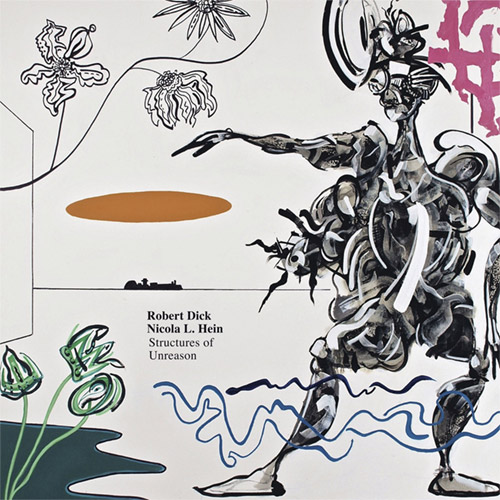




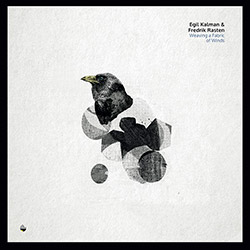

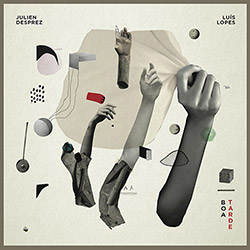

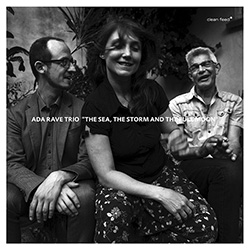


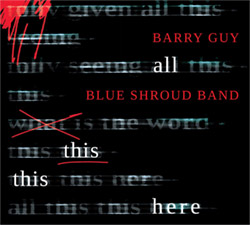


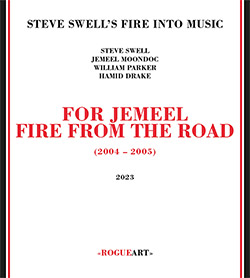




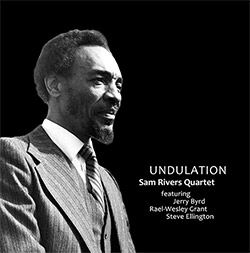
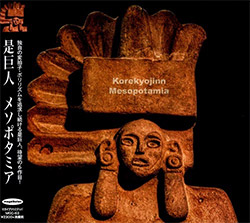


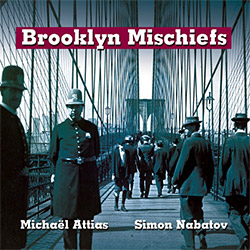
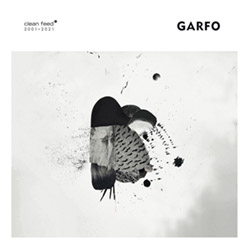
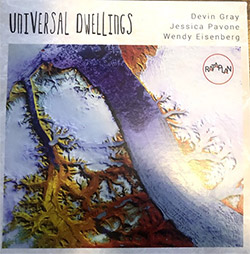



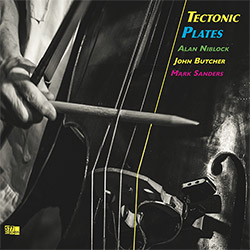


![+DOG+: The Light Of Our Lives [2 CDs]](https://www.teuthida.com/productImages/misc4/36009.jpg)


![Parker, Evan / Jean-Marc Foussat: Insolence [VINYL]](https://www.teuthida.com/productImages/misc4/36398.jpg)










![Deupree, Jerome / Sylvie Courvoisier / Lester St. Louis / Joe Morris: Canyon [2 CDs]](https://www.teuthida.com/productImages/misc4/36404.jpg)


![Eternities: Rides Again [CASSETTE]](https://www.teuthida.com/productImages/misc4/36247.jpg)

![Lopez, Francisco: Untitled (2021-2022) [2 CDs]](https://www.teuthida.com/productImages/misc4/36438.jpg)




![Eventless Plot | Haarvol: The Subliminal Paths [CASSETTE + DOWNLOAD]](https://www.teuthida.com/productImages/misc4/36232.jpg)







![Eventless Plot | Francesco Covarino: Methexis [CASSETTE + DOWNLOAD]](https://www.teuthida.com/productImages/misc4/36231.jpg)



![Das B (Mazen Kerbaj / Mike Majkowski / Magda Mayas / Tony Buck): Love [VINYL]](https://www.teuthida.com/productImages/misc4/36329.jpg)


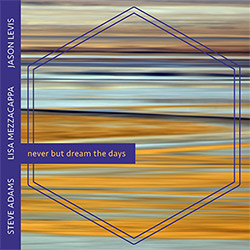
![Hemphill Stringtet, The: Plays the Music of Julius Hemphill [VINYL]](https://www.teuthida.com/productImages/misc4/36409.jpg)

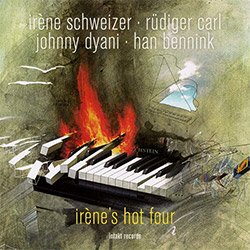







![Money : Money 2 [2 CDs]](https://www.teuthida.com/productImages/misc4/35894.jpg)




![Klinga, Erik: Elusive Shimmer [VINYL]](https://www.teuthida.com/productImages/misc4/36258.jpg)
![CHANGES TO blind (Phil Zampino): Volume 9 - I Wave on a Fine Vile Mist [CD + DOWNLOAD]](https://www.teuthida.com/productImages/misc4/36061.jpg)

![Wallmart / Rubbish: Asset Protection [split CD]](https://www.teuthida.com/productImages/misc4/35900.jpg)


![+Dog+: The Family Music Book Vol. 5 [2 CDs]](https://www.teuthida.com/productImages/misc4/35897.jpg)
![Kuvveti, Deli : Kuslar Soyledi [CASSETTE w/ DOWNLOAD]](https://www.teuthida.com/productImages/misc4/36107.jpg)

![Nakayama, Tetsuya: Edo Wan [CASSETTE w/ DOWNLOAD]](https://www.teuthida.com/productImages/misc4/36105.jpg)

![Brown, Dan / Dan Reynolds: Live At The Grange Hall [unauthorized][CASSETTE]](https://www.teuthida.com/productImages/misc4/36245.jpg)








![Palestine, Charlemagne / Seppe Gebruers: Beyondddddd The Notessssss [VINYL]](https://www.teuthida.com/productImages/misc4/36206.jpg)
![Palestine, Charlemagne / Seppe Gebruers: Beyondddddd The Notessssss [NEON GREEN VINYL]](https://www.teuthida.com/productImages/misc4/36207.jpg)

![Laubrock, Ingrid: Purposing The Air [2 CDs]](https://www.teuthida.com/productImages/misc4/35639.jpg)

![Yoko, Ono / The Great Learning Orchestra: Selected Recordings From Grapefruit [2 CDs]](https://www.teuthida.com/productImages/misc4/35841.jpg)









![Zorn, John / JACK Quartet: The Complete String Quartets [2 CDs]](https://www.teuthida.com/productImages/misc4/35609.jpg)

![Lonsdale, Eden: Dawnings [2 CDs]](https://www.teuthida.com/productImages/misc4/35480.jpg)



![Sorry For Laughing (G. Whitlow / M. Bates / Dave-Id / E. Ka-Spel): Rain Flowers [2 CDS]](https://www.teuthida.com/productImages/misc4/35985.jpg)

![Rolando, Tommaso / Andy Moor : Biscotti [CASSETTE w/ DOWNLOADS]](https://www.teuthida.com/productImages/misc4/36106.jpg)


![Electric Bird Noise / Derek Roddy: 8-10-22 [CD EP]](https://www.teuthida.com/productImages/misc4/35970.jpg)








![Elephant9 : Mythical River [VINYL]](https://www.teuthida.com/productImages/misc4/34624.jpg)



![Elephant9 with Terje Rypdal: Catching Fire [VINYL 2 LPs]](https://www.teuthida.com/productImages/misc4/35355.jpg)
![Deerlady (Obomsawin, Mali / Magdalena Abrego): Greatest Hits [VINYL]](https://www.teuthida.com/productImages/misc4/34876.jpg)







![Surplus 1980: Illusion of Consistency [CD]](https://www.teuthida.com/productImages/misc4/35069.jpg)
![Staiano, Moe: Away Towards the Light [VINYL + DOWNLOAD]](https://www.teuthida.com/productImages/misc4/35037.jpg)
![Coley, Byron: Dating Tips for Touring Bands [VINYL]](https://www.teuthida.com/productImages/misc4/17906.jpg)

![Lost Kisses: My Life is Sad & Funny [DVD]](https://www.teuthida.com/productImages/misc4/lostKissesDVD.jpg)